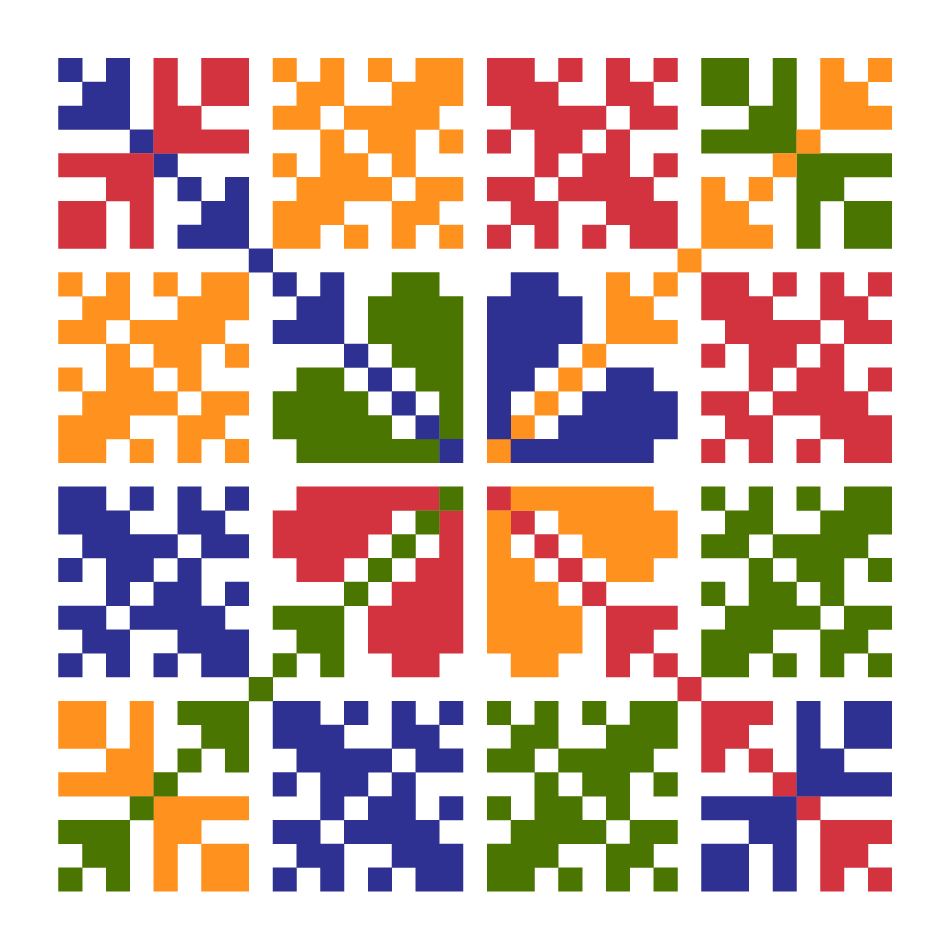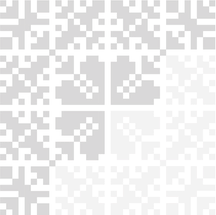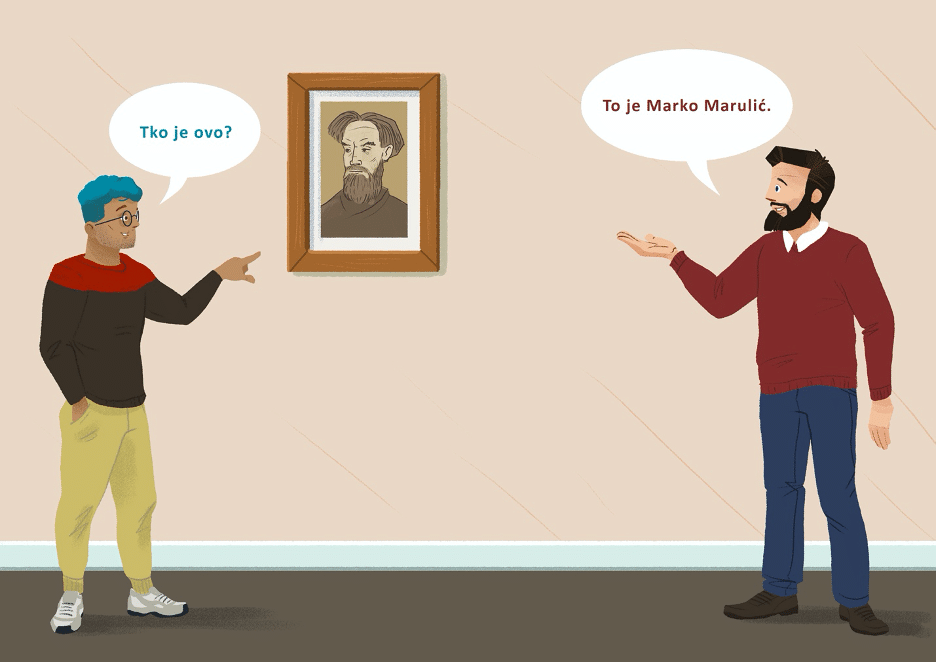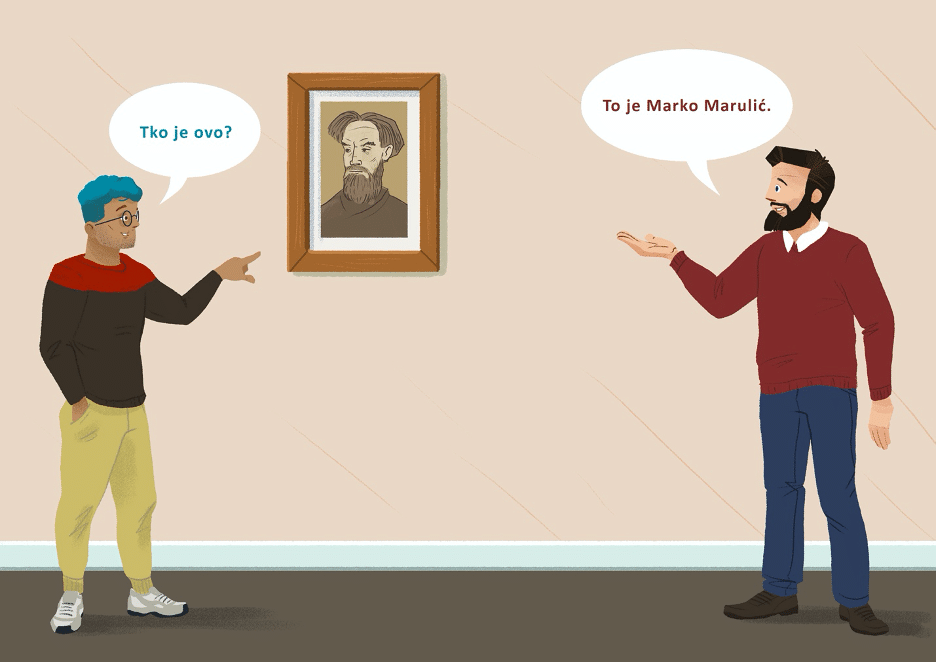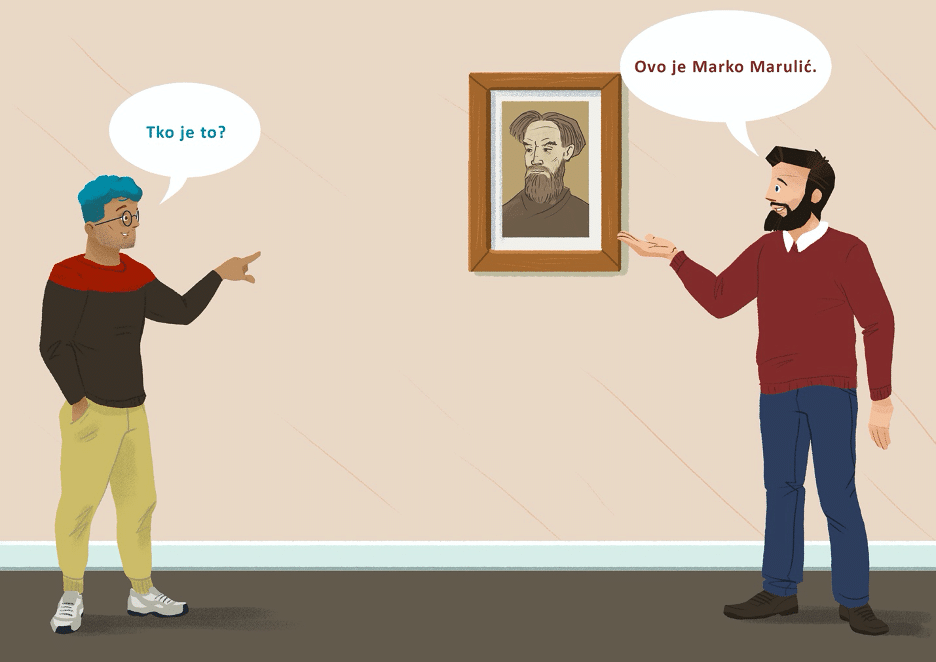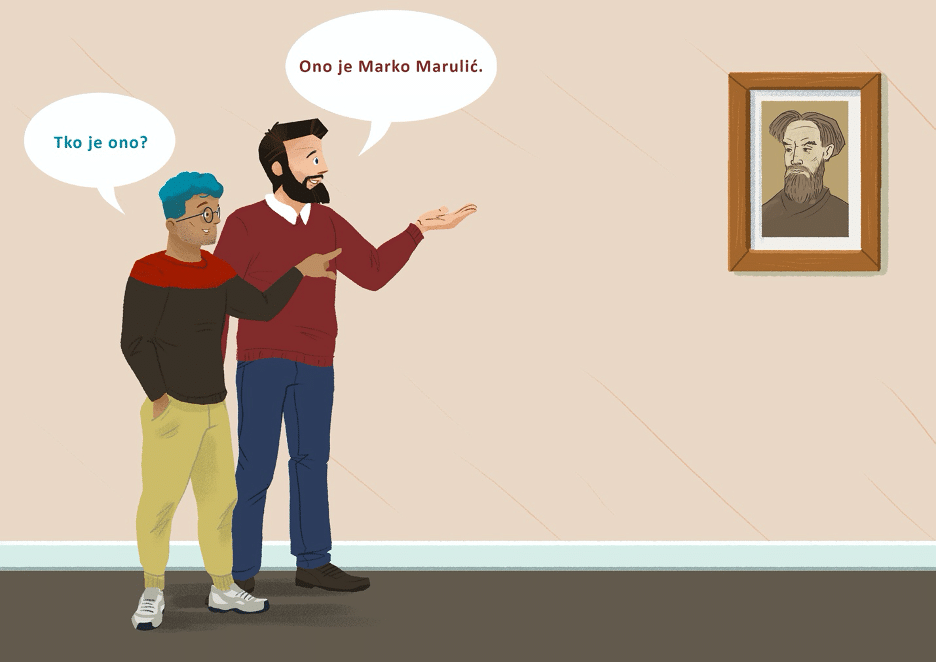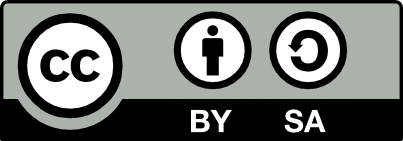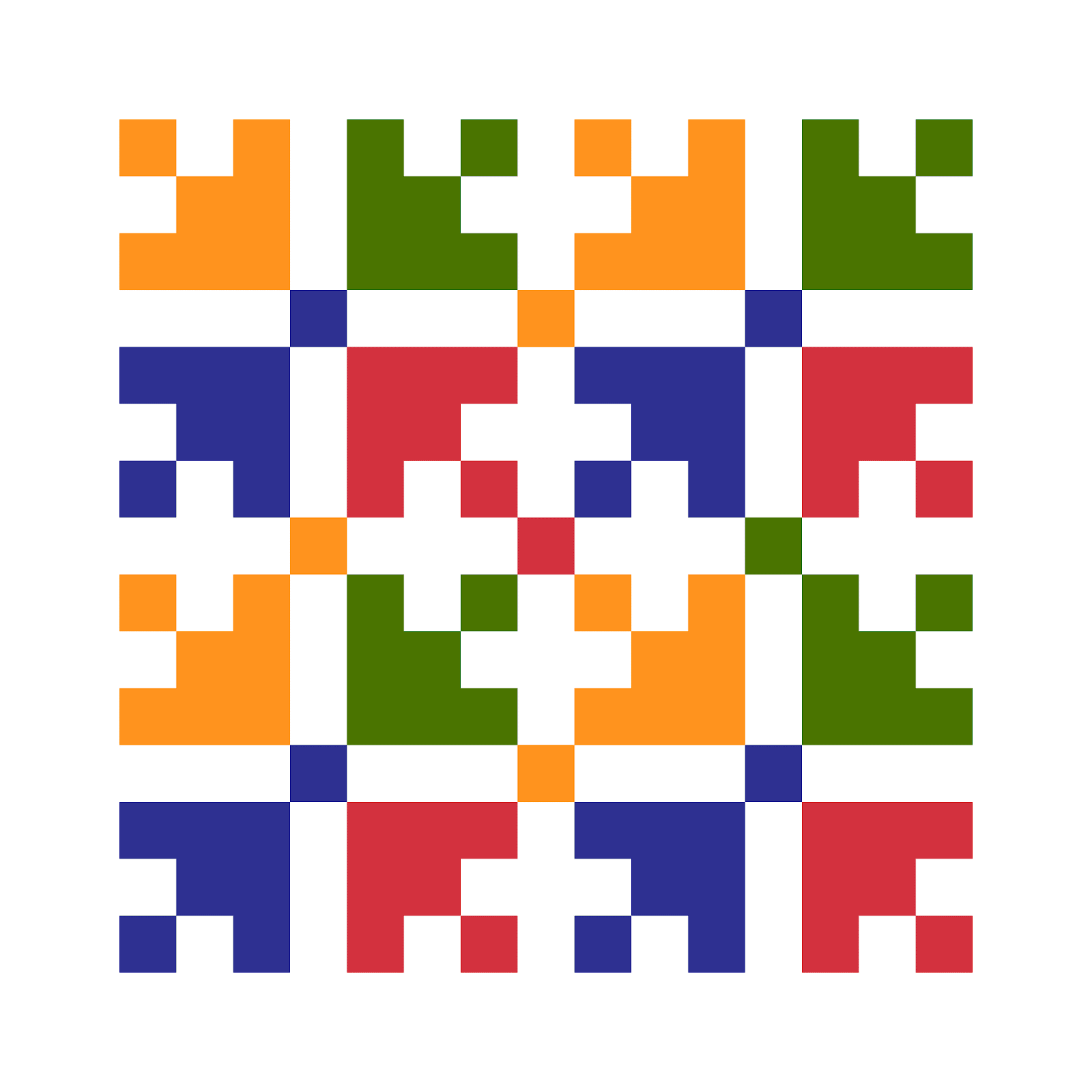C1 M2 L1 Grammar
1 | Modul 2: Gramatika
Biti ili ne biti
1 | 2 | Lekcija 1: Ljudi i stvari
| Who and What
Just like in English, you need to distinguish the function of tko from što. Tko (who) refers to animate nouns (people), while što (what) refers to inanimate nouns (objects). Example:
Tko je ovo? | Ovo je moj tata. | Ovo je moja mama. | Ovo je moje dijete. |
Što je ovo? | Ovo je moj mobitel. | Ovo je moja knjiga. | Ovo je moje ogledalo. |
1.2 Zadatak 1. Tko ili što?
Choose the correct question form, based on the answer that is provided on the top.
| This, that, that over there
You already encountered the difference between who (tko) and what (što). However, just as a review: Just like in English, you need to distinguish the function of tko from što. Tko (who) refers to animate nouns (people), while što (what) refers to inanimate nouns (objects).
Now, back to demonstrative pronouns – ovo (this), to (that), and ono (that over there). When do we use them, and how do we use them? Demonstrative pronouns are used when we want to point out to something or someone, and they are very often used with the question tko or što.
OVO | TO | ONO |
Tko je ovo? | Tko je to? | Tko je ono? |
Što je ovo? | Što je to? | Što je ono? |
In this lesson, you encountered the following dialogue:
As you can see, James is much closer to the picture than Luka. Thus, James has to use the form ovo as it is closer to him (Who is this?). On the other hand, Luka has to use to as the picture is closer to James and not to him (That is Marko Marulić.).
As you can see, usage of the demonstrative pronoun depends on where the thing that we are referring to is located. In other words, if the thing that we are referring to is closer to a speaker we need to use ovo. If the thing we are referring to is closer to a listener, we need to use to. If the thing we are referring to is equally far away from both speakers, we need to use ono.
this | that | that over there |
ovo | to | ono |
Situation #1 – equally close to both speakers | ||
Speaker 1: | Who is this? | Tko je ovo? |
Speaker 2: | This is my father. | Ovo je moj tata. |
Situation #2 – closer to a speaker 1 | ||
Speaker 1: | Who is this? | Tko je ovo? |
Speaker 2: | That is my father. | To je moj tata. |
Situation #3 – closer to a speaker 2 | ||
Speaker 1: | Who is that? | Tko je to? |
Speaker 2: | This is my father. | Ovo je moj tata. |
Situation #4 – far away from both speakers | ||
Speaker 1: | Who is that over there? | Tko je ono? |
Speaker 2: | That over there is my father. | Ono je moj tata. |
To understand better, look at the following dialogues/pictures
Situation #2 – closer to a speaker 1
The picture is closer to James (“speaker” – since he started the conversation)
Situation #3 – closer to a speaker 2
The picture is closer to Luka (“listener” –he is the one receiving the initial question)
Situation #4 – far away from both speakers
What if the picture is equally far away from both of them? Well, then we need to use ono in both – the question and the answer. Look at the picture.
1.2 Zadatak 2. Ovo, to, ono
Look at the following pictures and complete the sentence of each person. What demonstrative pronoun do both characters need to use in each picture?
Images used in this document are from these sources.
